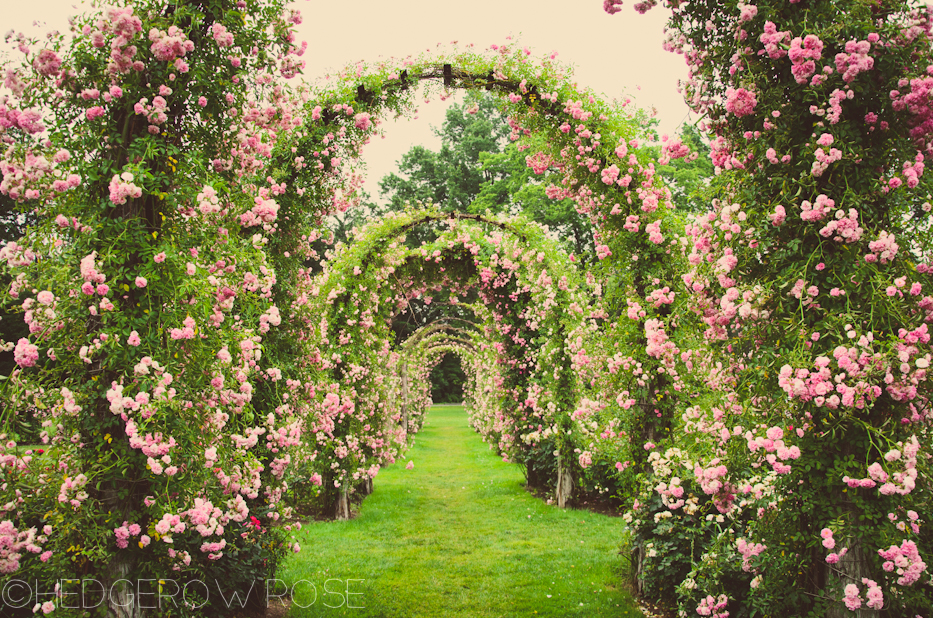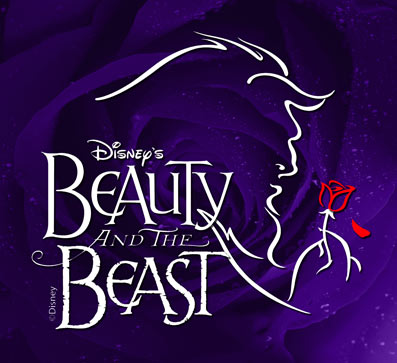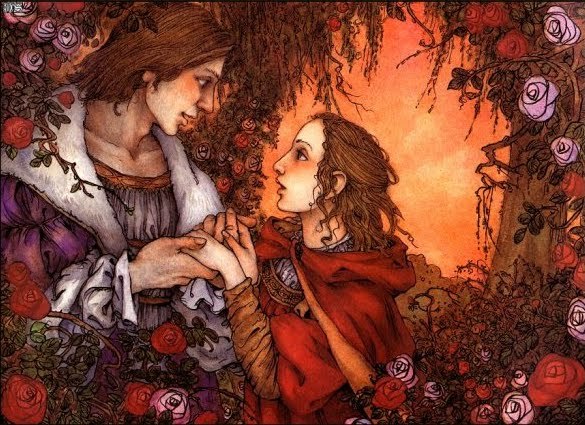In honor of Valentine's Day month, I thought I'd do a little reading on roses in fairy tales. The flower is featured in several tales, such as "Beauty and the Beast," "Snow White and Rose Red," and many more.
A little background on roses themselves, from Auracacia:
Perhaps no flower is more recognizable and no aroma more evocative than that of the rose. Its rich fragrance has perfumed human history for generations, from ancient Persian gardens, where the rose was probably first cultivated to extravagant Roman banquets whose revelers feasted amongst soft piles of rose petals. The rose is common and unassuming, blooming carefree in a grandmother's rambling, overgrown garden. But the rose can also personify black tie elegance, its velvety blossoms lavish enough to keep company with champagne and caviar. The rose symbolizes innocence, love, passion, sympathy, desire, luxury and the ideal aesthetic.
Elizabeth Park Rose Garden, Connecticut
Besides being used as a medicine in history, the rose has a long history as a costly perfume. Fresh roses were macerated in hot fat to produce fragrant pomades in ancient India, Greece and Egypt. In Egypt these pomades were shaped into cones and placed on the top of the head. As body heat melted the fat, fragrant, rose-scented oil would trickle down the face and neck.
The difficulty of extracting rose oil from the plant has always caused it to be a very expensive substance. A rose blossom contains only about 0.02% essential oil. It takes about 60,000 roses to produce just 1 ounce of oil, and ten thousand pounds of rose blossoms to produce 1 pound of oil. The extraction of rose absolute with chemical solvents is more efficient than the steam distillation of the essential oil. Ten pounds of a substance known as concrete can be extracted from 10,000 pounds of roses using this method. The concrete is further refined to produce rose absolute, the yield of which is about 67% from the concrete.
Regardless of its price, the potency and incredible fragrancing power of even tiny amounts of rose otto or absolute makes it a sound investment -- especially considering that a dozen fresh roses costs around $60.00 and it takes about 2 and 1/2 dozen roses to produce a single drop of oil.
Already, we see that roses can present an interesting paradox. They can be commonplace and represent innocence, and at the same time bring to mind luxury and passion. Also, I was reminded of Robin McKinley's Rose Daughter as I read the bit about how difficult/costly it is to make rose perfume. I've read that part of the reason McKinley wrote a second Beauty and the Beast novel was to incorporate all that she had learned about roses since writing her first book, and the flower is featured more prominently in the second.
In the Grimms' version of Sleeping Beauty, the main character is named Briar Rose. After she pricks her finger and falls asleep, the castle is covered with a hedge of thorns that, one hundred years later, are only beautiful flowers that magically separate to let the Prince in. Although the flowers aren't named, it's not surprising that later storytellers and artists have assumed them to be roses, such as Edward Coley Burne-Jones:
The Briar Wood
The fateful slumber floats and flows
About the tangle of the rose.
But lo the fated hand and heart
To rend the slumberous curse apart.
The fateful slumber floats and flows
About the tangle of the rose.
But lo the fated hand and heart
To rend the slumberous curse apart.
"The Briar Wood "
(1890)
Edward Coley Burne-Jones
(1890)
Edward Coley Burne-Jones
Shmoop has a page about the symbolism of roses in Hans Christian Andersen's fairy tales. Roses are featured in the final redemption scenes of many of his tales, such as "The Wild Swans", in which the air is filled with the scent of roses as Elisa's brother finally explains how she sacrificed herself to rid them of their curse. Red roses start magically blooming, with a single white rose on the top of the stake that was to have burned Elisa to death.
W. Heath Robinson, "The Wild Swans"
In Andersen's tale "The World's Most Beautiful Rose," we are told outright that the rose "symbolizes the highest and purest love." Especially when we look at the colors most often featured, white and red, there is an association with Christian theology, which Andersen was referring to here: the red blood of Christ, which results in white purity.
Rose Garden Wallpaper
The Grimms have a short, tragic tale called "The Rose:"
Once there was a poor woman who had two children. The youngest one had to go into the forest every day to fetch wood. Once when he had gone a very long way to find wood, a child who was very little but very strong came to him and helped him gather the wood and carried it up to his house, but then in the wink of an eye he disappeared. The child told his mother about this, but she did not believe him. Finally the child brought a rose and said that the beautiful child had given it to him and that when the rose was in full blossom he would come again. The mother placed the rose into water. One morning the child did not get up; the mother went to his bed and found him lying there dead. On that same morning the rose came into full blossom.
Josee Masse, for Marilyn Singer's poem "Longing For Beauty," from the book Mirror Mirror which YOU NEED TO OWN
"The rose is a common element in the Beauty and the Beast tales. Beauty usually requests a rose from her father, hoping to ask for a gift he can afford whatever his success in reviving his business. Ironically, Beauty's request for the rose will be the most dangerous and costly gift the father tries to produce.
Thomas Mintz views the rose as "representing both the Beast's masculinity and Beauty's femininity, the thorns signifying the former, and the seeds and color of menses/defloration the latter" (Mintz 1969-70).
In later versions of the story, primarily Disney's film, another rose symbolizes the Beast's life. The Beast has been given a fixed amount of time to have the spell broken which is represented by the rose. The rose will die when the time is up."
Again, illustrators love to make use of the rose and you'll find the flower in many fairy tale illustrations, even when not specified in the text. For example, Marianna and Mercer Mayer's picture book "Beauty and the Beast" has a lot of symbolism connected to the roses and their colors throughout the story
There are so many more examples in fairy tale and folklore, maybe a part 2 for next year?? Anyway, something to think about as stores fill up with roses and red heart decorations!










The child that the boy met in "The Rose" was Baba Jesus. The Grimms were suckers for heavy-handed symbolism like this
ReplyDeleteThat makes sense, although I also wouldn't be surprised if older folkloric versions just featured a boy who was a vague supernatural portent of doom, or a child version of Death
DeleteI realize this post is five years old, so I apologize if this is no longer relevant, but the tale of the Rose reminds me very much of the tale told in the German song Erlkonig, in which a mischievous, elfin king courts the attentions of a young child as his father carries him home on horseback, late one evening. The child can see the elfin figure in the gloom, and hear his seductive promises of endless games and playmates and figures of much amazement, but when he tells his father, his father thinks the boy's losing his mind. He speeds home, as the elfin king's promises turn to threats, that if you won't come with me by choice, I will take you by force, and as the man rides into the courtyard of his home, the boy perishes in his arms. There's no rose in that tale, of course, but I still feel the character is a similar one, especially as the Grimms folklore came often from Germanic folklore. (It also reminds me a little of the story of Hades and Persephone, but that one has a slightly less dark ending).
DeleteLove this! Thought you might like to know that the rose is also very connected with the Snow White tale. Kate Forsyth does a great summary here, including the relevant portions of the main tale variants that include roses: http://www.kateforsyth.com.au/kates-blog/spotlight-snow-white
ReplyDeleteThanks! I had read this when it came out but forgotten about the rose connection. I think I should definitely do a part 2 next year...
Deletepoop
ReplyDelete